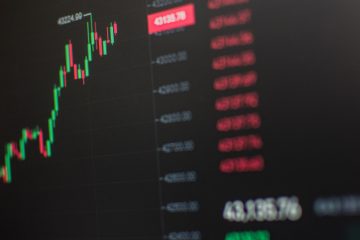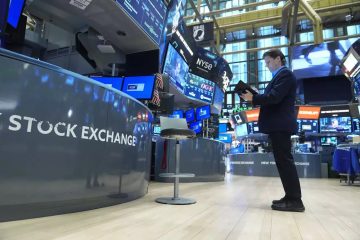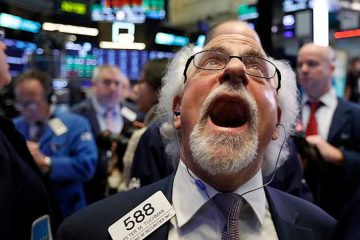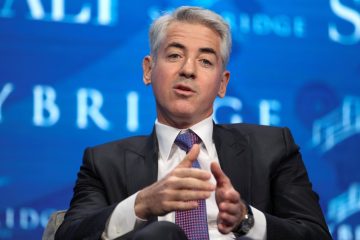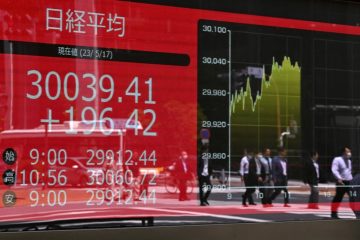World : Sterling firm as BoE rate call looms, Asian shares boosted by oil
The British pound edged up on Thursday as investors counted on the Bank of England to cut interest rates to a record low, while a rebound in oil prices from four-month lows lifted Asian stocks.
The sterling rose 0.1 percent to $ 1.3340 GBP=D4, keeping some distance from its three-decade low of $ 1.2798 hit almost a month ago, although currency markets may be somewhat ambivalent over how to react to the BoE decision – buy sterling if the BoE cuts, sell if it doesn’t, or vice versa?
Meanwhile, MSCI’s broadest index of Asia-Pacific shares outside Japan .MIAPJ0000PUS rose 0.4 percent, led by gains in resource shares, recouping some of its 1.5 percent losses on Wednesday.
The expected BoE cut to a record low 0.25 percent later on Thursday would be the first since 2009 as Britain’s economy teeters on the brink of recession.
“Given the market has a 25 basis-point cut priced at 100 percent, one would expect a huge spike in GBP/USD if they fail to ease,” Chris Weston, chief market strategist at IG in Melbourne, wrote in a note.
“But the real issue is whether they cut by 50 basis points and give a strong indication of (quantitative easing) in the September meeting.”
Britain’s economy is slowing at the fastest pace since the financial crisis, based on Markit’s monthly all-sector Purchasing Managers’ Index on Wednesday, which recorded the steepest month-on-month decline on record.
Many market players also believe the BoE may resume its multi-billion-pound quantitative easing program of government bond purchases.
The euro held steady at $ 1.1149 EUR=EBS, slipping from 5-week high of $ 1.1234 touched on Monday.Oil, which jumped more than 3 percent on Wednesday, extended gains in Asian trade on Thursday, arresting its almost constant fall since early June, after a larger-than-expected gasoline draw eased concerns about global supply glut.
Brent crude futures LCOc1 rose 0.6 percent on Thursday to $ 43.34 per barrel, extending its recovery from Monday’s four-month low of $ 41.41. U.S. crude CLc1 gained 0.7 percent to $ 41.12 per barrel.
That advance, which boosted energy shares, contributed to gains on Wall Street, with the S&P 500 index .SPX closing up 0.3 percent on Wednesday.
Japanese shares, however, failed to join in the rebound, with the Nikkei .N225 reversing earlier gains to touch a near-four-week low on Thursday. It was last down 0.4 percent.
Bank of Japan Deputy Governor Kikuo Iwata said on Thursday that a comprehensive review of the central bank’s monetary policy next month would focus on the transmission mechanism and obstacles to its monetary policy. However, it is not meant to offer a specific direction for future monetary policy, he said.
The dollar bounced back 0.6 percent from Monday’s five-week low against a basket of six major currencies as investors looked to July payrolls data on Friday.
The dollar index stood little changed at 95.505 .DXY =USD on Thursday, though it is still far below a 4 1/2-month peak of 97.569 hit last week.
A report from payrolls processor ADP showed on Wednesday U.S. private employers added 179,000 jobs in July, a tad above market expectations and bolstering hopes that Friday’s data could show moderate growth in employment.
Soft second-quarter U.S. GDP data and some other mixed data have dented the dollar as they reduced expectations that the Federal Reserve will raise rates this year.
“A September rate hike could only be justified if July and August’s payrolls prove exceptionally strong,” David Lafferty, chief market strategist at Natixis Global Asset Management, wrote in a note. “However, a post-election tightening in December is still in the cards provided the macro data doesn’t deteriorate.”
Chicago Federal Reserve Bank President Charles Evans said Wednesday one rate increase might be appropriate this year, despite his worry that inflation is undershooting the Fed’s 2 percent target, because “the real economy is doing quite well.”
Against the yen, the dollar was 0.2 percent lower at 101.055 yen , not far from Monday’s low of 100.68 yen.
Japanese government bonds, which suffered their worst sell-off in more than three years this week on worries the Bank of Japan may be running out of realistic easing options, remained under pressure.
The 10-year JGB yield rose 1.5 basis points to minus 0.075 percent.



